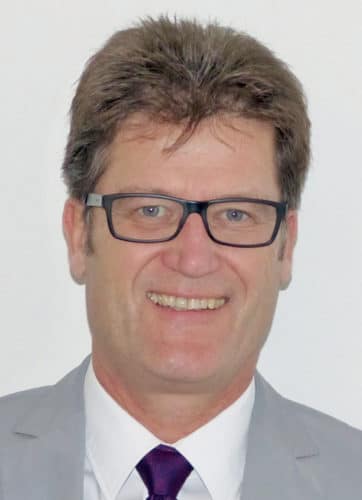As we gear up for the next wave of growth in the Internet of Things (IoT), importance of standardisation becomes more evident. Wolfgang Eisenbarth, chairman, Standardization Group For Embedded Technologies (SGET) shares with Rahul Chopra the advantages of standardised IoT elements and how organisations like SGET are bringing those advantages to industry players.

Q. When was SGET set up? How would you describe its mission?
A. SGET was founded in 2012 as a consortium of independent manufacturers with a common interest in quickly adopting embedded technology innovations through open and free standards. The emphasis is on high innovation and low bureaucracy. We are a non-profit organisation sustained by membership fees.
SGET’s global mission is to enable the development and evolution of embedded computing hardware and software standards in such a way that the technology deployed can keep pace with changes in market requirements. This can be particularly critical for the rapid implementation of new standards for devices, communications, connectivity and interoperability.
Q. How does SGET ensure that the mission is achieved?
A. This happens when our standards development team (SDT) focuses on how to accelerate customers’ time-to-market. SGET has low bureaucracy by vesting voting rights in members who are manufacturers with a broad hardware or software focus and have a direct interest in the resulting specification. Non-voting members are valued for their expertise in developing and applying technology, enabling productisation and integration of SGET products, offering value-added services and shaping markets.
As technologies evolve and improved performance and higher quality are enabled through market innovation, SDT’s job is to judge when the next leap can be made and to set about agreeing on common standards quickly and easily so that all participants—manufacturers, industrial users and service providers—can deploy next-gen technology improvements and compete on an equal basis.
Q. How do SGET solutions differ from the general IoT product base?
A. SGET technology solutions for industrial applications target a wide range of appliances while providing numerous interfaces in a compact format. For example, SGET-derived products can be deployed at the edge as data concentrators and gateways, and can be configured for any device and protocol used in remote, low-power, intelligent applications. To complete the link from Edge to cloud, SGET’s Universal IoT Connector is a software-only specification to enable any embedded hardware to exchange data between embedded devices and a cloud-hosted infrastructure using MQTT or XRCE. It acts as the glue between embedded devices, sensors, actuators and any cloud service available under open source licensing.
Q. How will an OEM benefit from becoming a member of SGET?
A. Membership gives them a seat at the table in shaping next-gen embedded technologies that will benefit users all over the globe, and help improve industries, economies and the lives of millions.
Members can influence new specifications; use SGET logos, trademarks and specifications; display their products and company on SGET website; and network and collaborate throughout the embedded community.
Q. Once enrolled, what is expected from members as compliance?
A. Members are not required to do anything—participation is voluntary.
Q. Can Indian design houses also become members?
A. Yes, of course!
Q. Who is the primary beneficiary of this forum?
A. We operate in an ecosystem characterised by robust competition in free markets. The greater the participation, the higher will be the benefits for all in various forms—leading edge technologies for developers and integrators, multiple sources of supply for OEMs and virtually limitless solutions for end customers to differentiate their offerings at competitive pricing.
Q. Can this forum be positioned as a cartel by non-believers?
A. Quite the opposite! By embracing open standards and open markets, SGET reduces barriers to competition and, thereby, ensures that SGET-derived products are price-competitive.
Q. What powers does the executive team have over its members, if any?
A. Compliance is important for users to achieve interoperability. Nevertheless, there is no overhead structure or costly lab approvals to ensure a seamless integration of competitive products. Keeping cost to the user in mind, SGET has decided to focus on mechanical and electrical interfaces. It offers design guides to support compatibility to the maximum extent without involving a lab and certification.
Q. If some members pursue the goals half-heartedly, will it lower the value of those supporting completely?
A. This has not happened yet. Leading companies take this effort seriously and therefore set the expectations high. SGET internally regulates the quality and integrity of its standards by requiring that revisions to a standard or initiating a new standard requires the agreement or initiative of at least three independent voting members.





